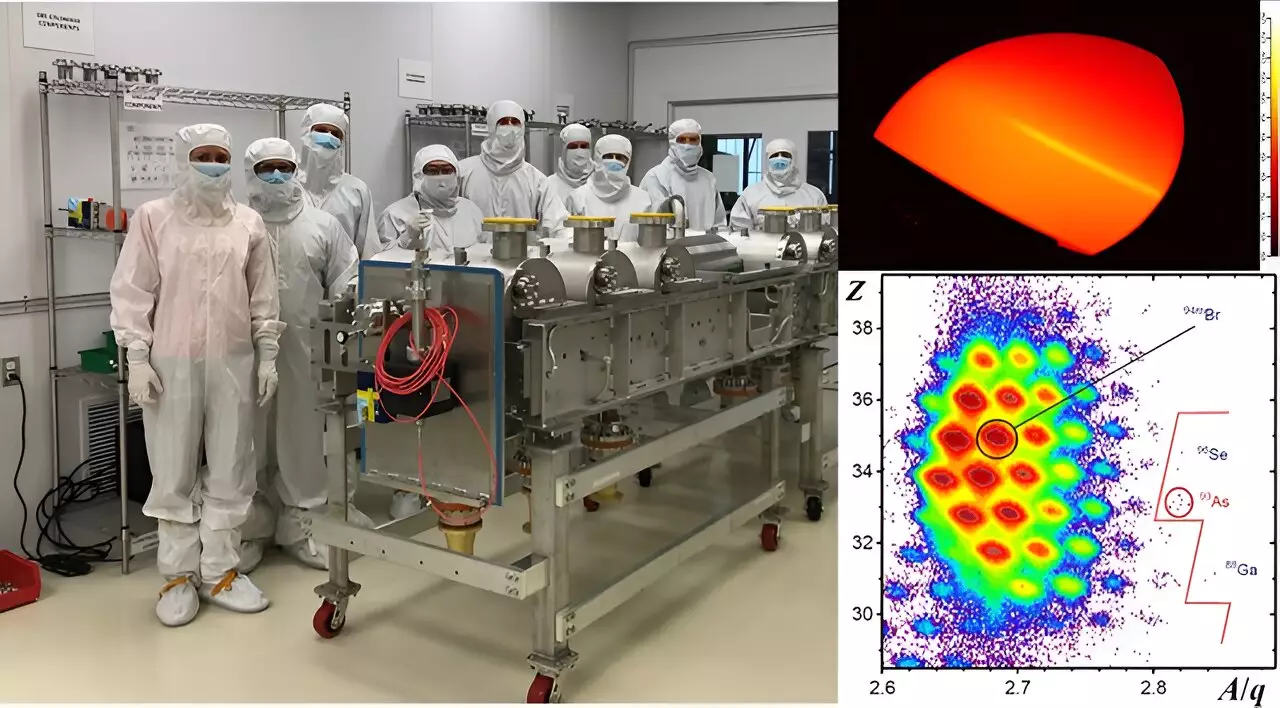Recent advances in nuclear physics have marked a transformative moment at the Facility for Rare Isotope Beams (FRIB). Scientists and engineers have successfully accelerated a high-power beam of uranium ions, achieving an unprecedented output of 10.4 kilowatts of continuous beam power. This major accomplishment is documented in the prestigious journal, *Physical Review Accelerators and Beams*. The ability to manipulate uranium, a notoriously challenging element to accelerate, sets the stage for significant advancements in scientific research, reinforcing uranium’s critical role in isotope production.
Uranium’s significance extends beyond its difficulty; it serves as a cornerstone in the realm of scientific exploration. Notably, over half of the 17 key scientific programs identified by the National Academy of Sciences and the Nuclear Science Advisory Committee depend on a uranium primary beam. The reason for this reliance lies in uranium’s capability to yield a wide array of isotopes through fragmentation and fission processes. With this latest achievement in uranium beam acceleration, FRIB has not only strengthened its research capabilities but has also opened new pathways for the exploration of rare isotopes, paving the way for future discoveries and advancements in nuclear science.
Immediate Outcomes: Discovering New Isotopes
In a remarkable demonstration of its capabilities, the high-power uranium beam facilitated the identification of three new isotopes—gallium-88, arsenic-93, and selenium-96—within just eight hours of operation. This relatively rapid progression from acceleration to identification underscores the facility’s potential for contributing to the nuclear science community. The conditions necessary for sustaining such high-power uranium beams involved the precise operation of various accelerator devices, each working at optimal accelerating gradients, thereby establishing a robust foundation for creating rare isotopes.
This groundbreaking achievement can be attributed to several innovative technologies and methodologies deployed during the experiments at FRIB. The new superconducting linear accelerator, comprised of 324 resonators arranged in 46 cryomodules, played a pivotal role in this success. Additionally, the development of a liquid-lithium stripper and the incorporation of advanced techniques such as uranium production through the Electron Cyclotron Resonance (ECR) ion source were instrumental. Researchers creatively engineered methods that allowed for the simultaneous acceleration of three charge states of uranium, facilitating record-high power outputs.
The collaborative nature of this research cannot be overstated. The collective efforts of scientists from the United States, Japan, and South Korea not only highlight the global character of nuclear research but also underscore the importance of sharing knowledge and resources in addressing complex scientific challenges. As FRIB continues to push the boundaries of what is possible in isotope production, its commitments to innovation and collaboration will undoubtedly enrich our understanding of nuclear physics and its application in various fields.
The accomplishments at FRIB represent a significant stride forward in isotope research, expanding the frontiers of our scientific capabilities and inviting new discoveries that were previously beyond reach. The combination of advanced technology, interdisciplinary collaboration, and a focused vision for the future positions FRIB at the forefront of nuclear science, inspiring new inquiries into the mysteries of isotopes and their potential applications.


Leave a Reply